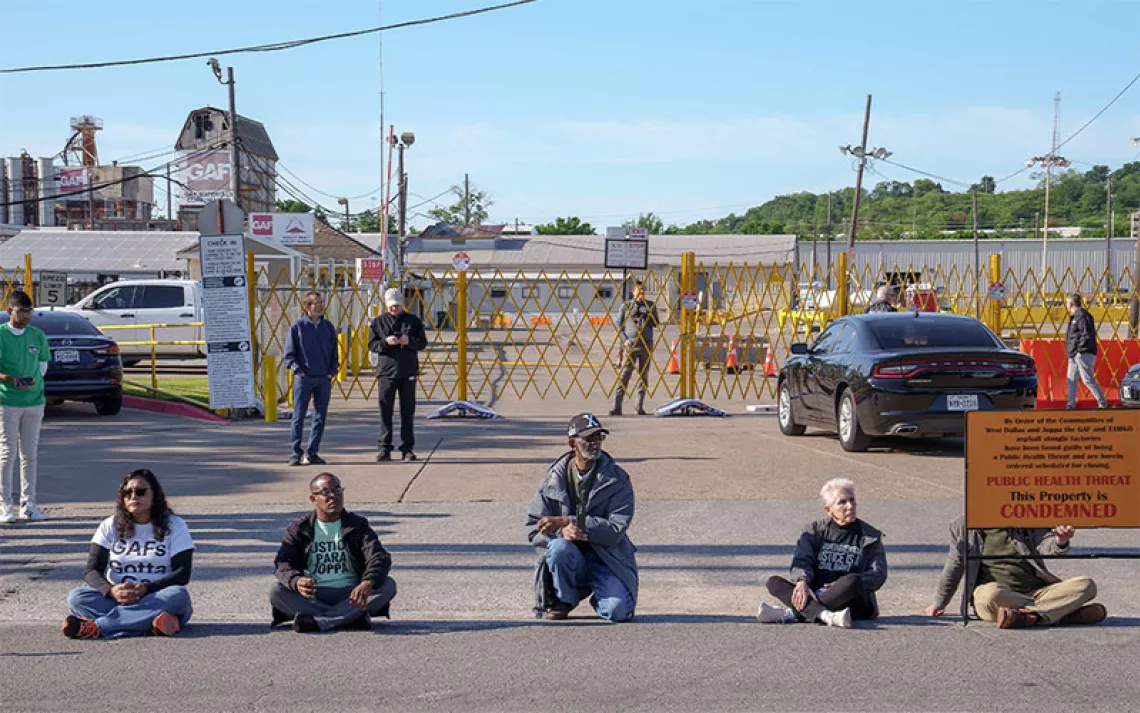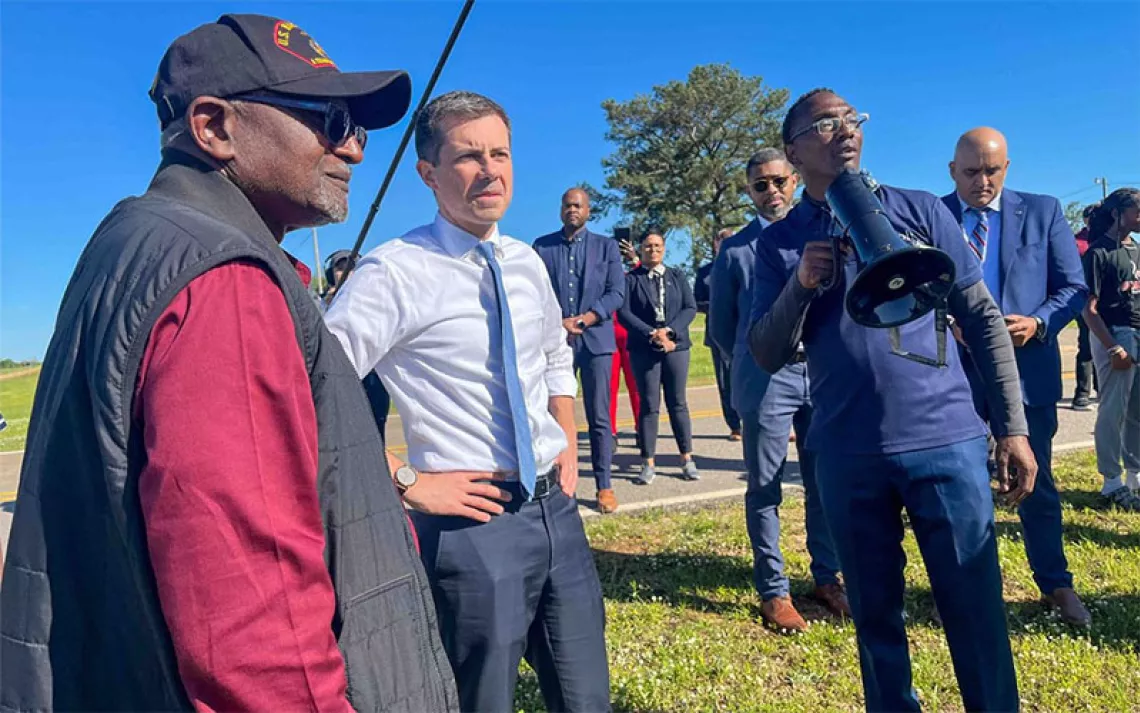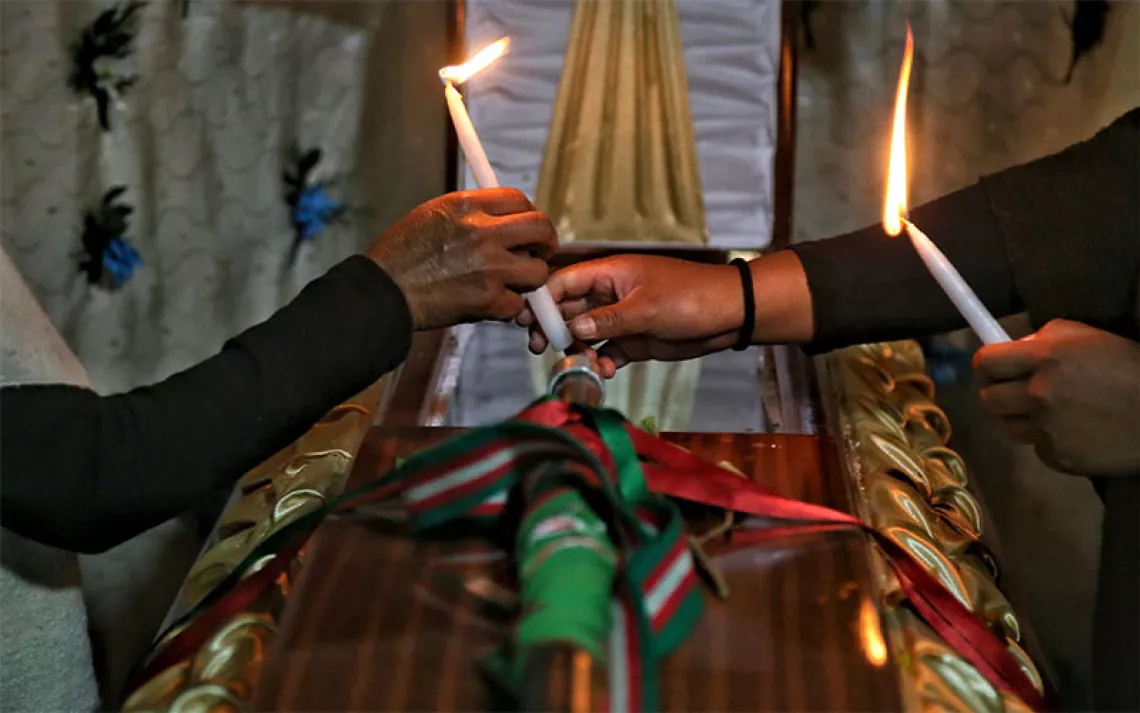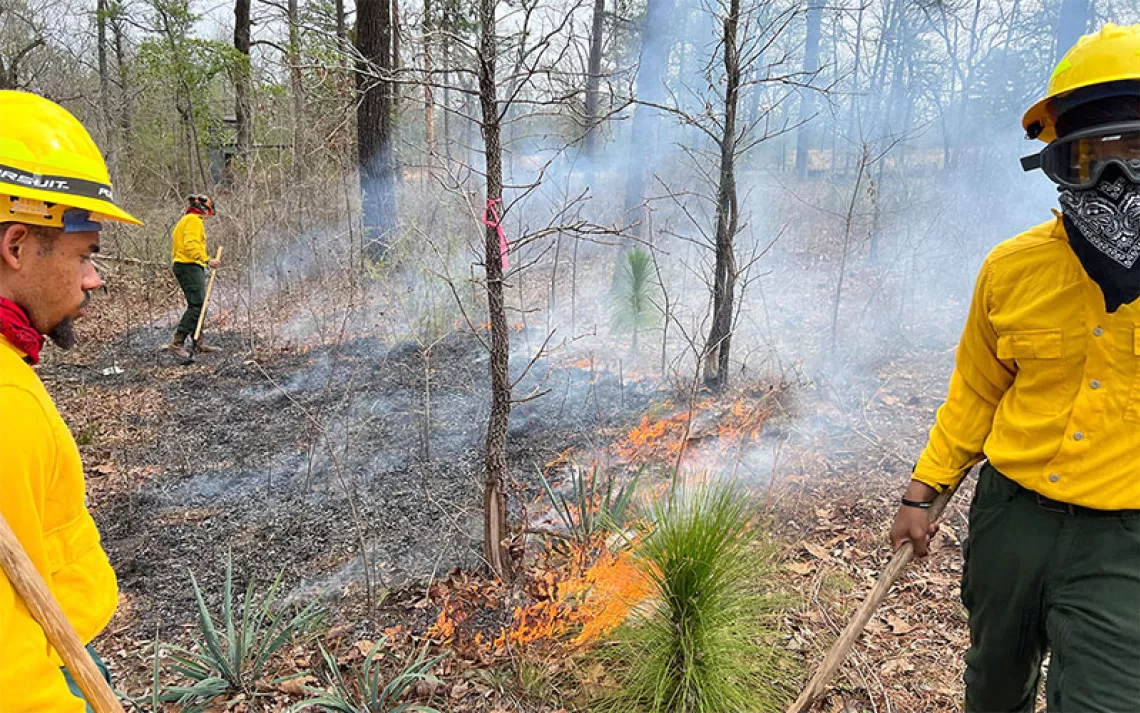The Annual Sugarcane Burning in Florida Involves Stark Injustices
Black communities are disproportionately impacted by Big Sugar's agricultural practices
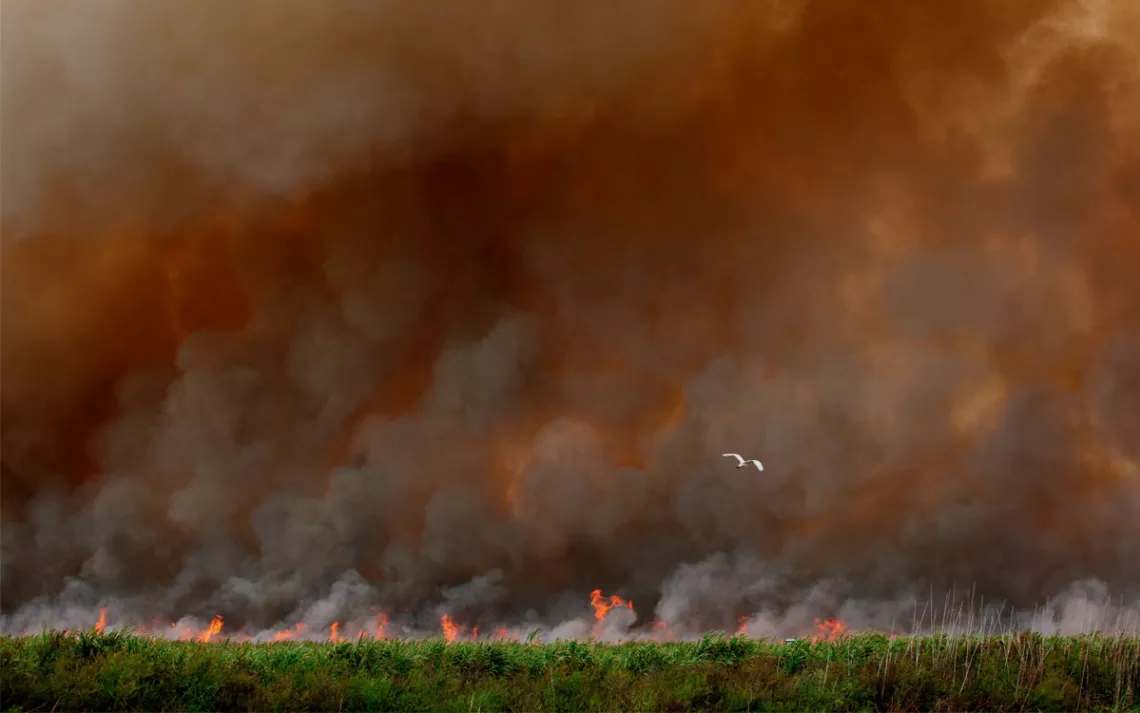
Black-gray smoke billowed into the sky and blocked the sun, forming a thick plume behind Florida’s Pahokee Middle-Senior High School. As student Madison Jones watched flames rise from a nearby sugarcane field, it struck her how normal it seemed. Seeing cane fires flare up on a school day was as common as watching thunderheads gather on the same horizon. Sometimes the smoke clouds brought what her dad called “black rain.”
In spring 2023, while mulling her senior art project, Jones shot a picture of the blaze to capture its contradictions: A fixture of local farming. An aggravator of her and her mom’s respiratory disease. A normality most Americans probably wouldn’t tolerate—or be expected to.
“I thought it was really interesting that seeing something like that is very common for people who live in Pahokee, and very common to see from the high school,” Jones said. “Nobody points it out when it happens. But I realized if that were to happen to somebody from a more affluent community, it would be really shocking.”
Her small town borders the southeastern shore of Lake Okeechobee, where fresh water once flowed to the Everglades. In the 19th century, speculators drained the grassy waters for the rich soils below. Today, the nation’s largest sugarcane crop checkerboards the jet-black muck, eternally flat but for the palm trees, sugar refineries—and smoke plumes.
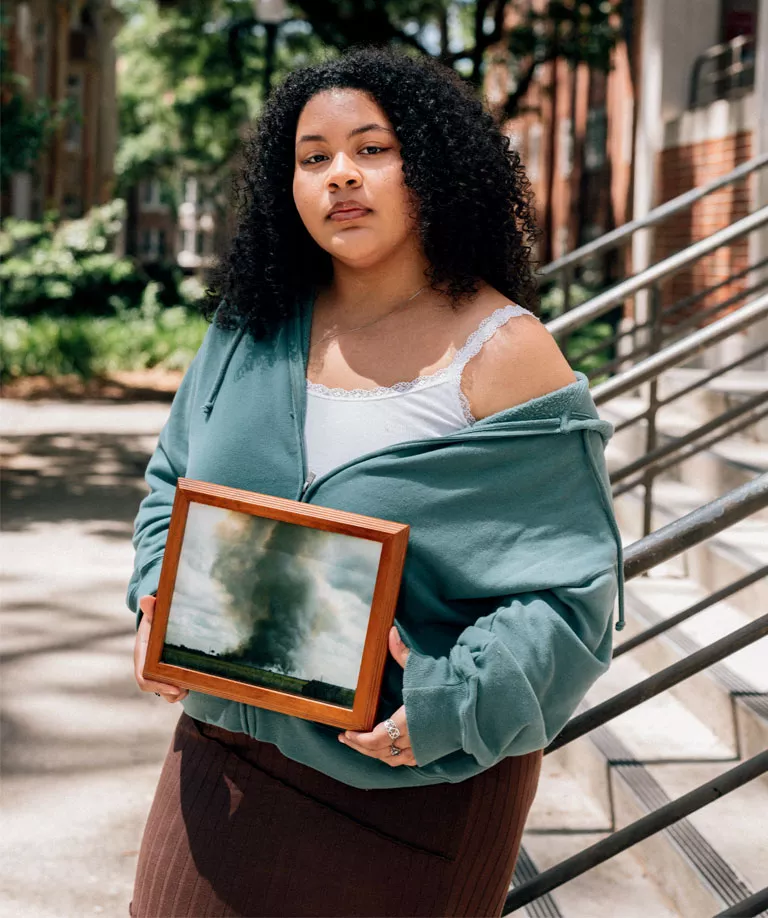
Madison Jones, 19, at the University of Florida, holds a photo she took from her high school balcony as part of a senior art project for her International Baccalaureate diploma. The sugar industry describes cane-burning opponents as “anti-farming” outsiders. But Jones, born and raised in Pahokee and the daughter of an agricultural truck driver, is among the locals who object to the fires.
Fall through spring, growers ignite thousands of fires across more than 400,000 acres of Florida cane to sear the tall, leafy blades away from the sugar-packed stalk. The practice dates to when laborers cut cane with machetes, but it makes 21st-century mechanical harvesting cheaper and faster too. The burning also poses health risks. Agricultural smoke carries volatile chemicals such as acetone and benzene, and fine particles linked to respiratory and heart diseases.
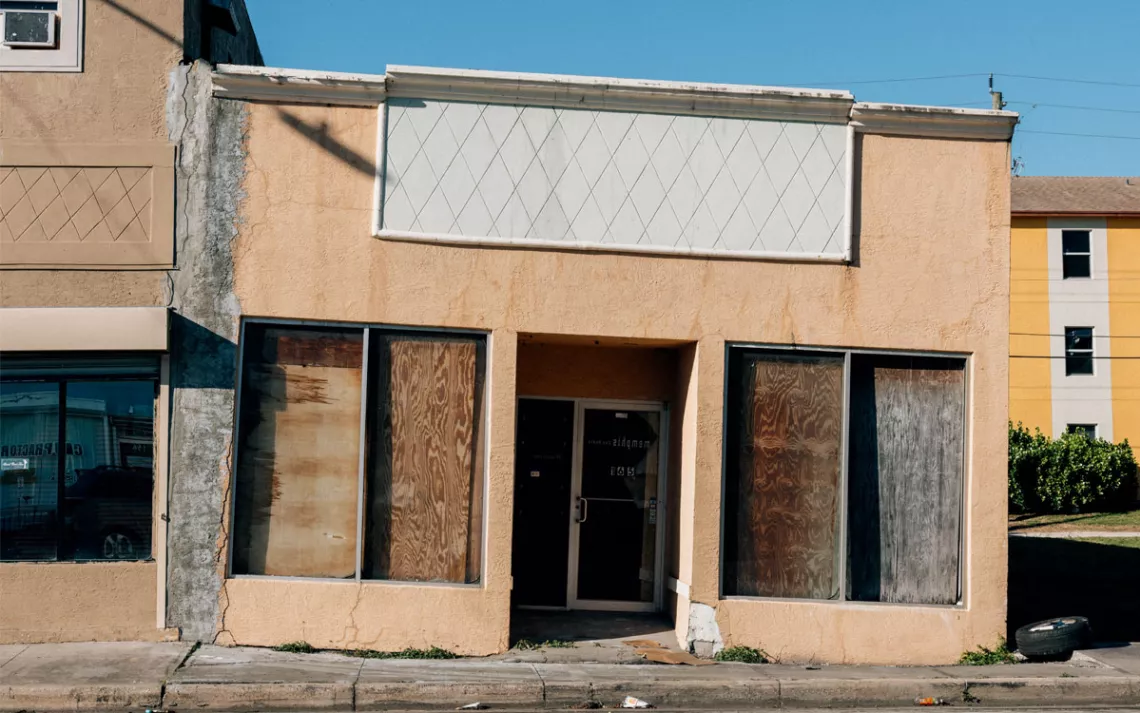
The small towns southeast of Lake Okeechobee are known as the Glades. In Belle Glade, located in the heart of the sugarcane production region, one-third of residents live below the poverty line, and a quarter of those under age 65 have no health insurance.
Jones grew up with asthma that flared during fire season. She’d breathe medicine into her lungs through her pediatric nebulizer, a green plastic frog. She never needed it once the fires ceased, or during family trips to Georgia.
Now, Florida’s cane fires have drawn widespread scrutiny due to investigative reports on respiratory health in the small communities known as the Glades—and the growing awareness of the injustice in state policies that do more to limit burning when the wind blows east toward more affluent areas of Palm Beach County. Jones, who graduated as valedictorian, learned only after she’d moved to college that wealthier communities are spared the smoke. “That was really, really disheartening how much they don’t regard us as highly,” she said.
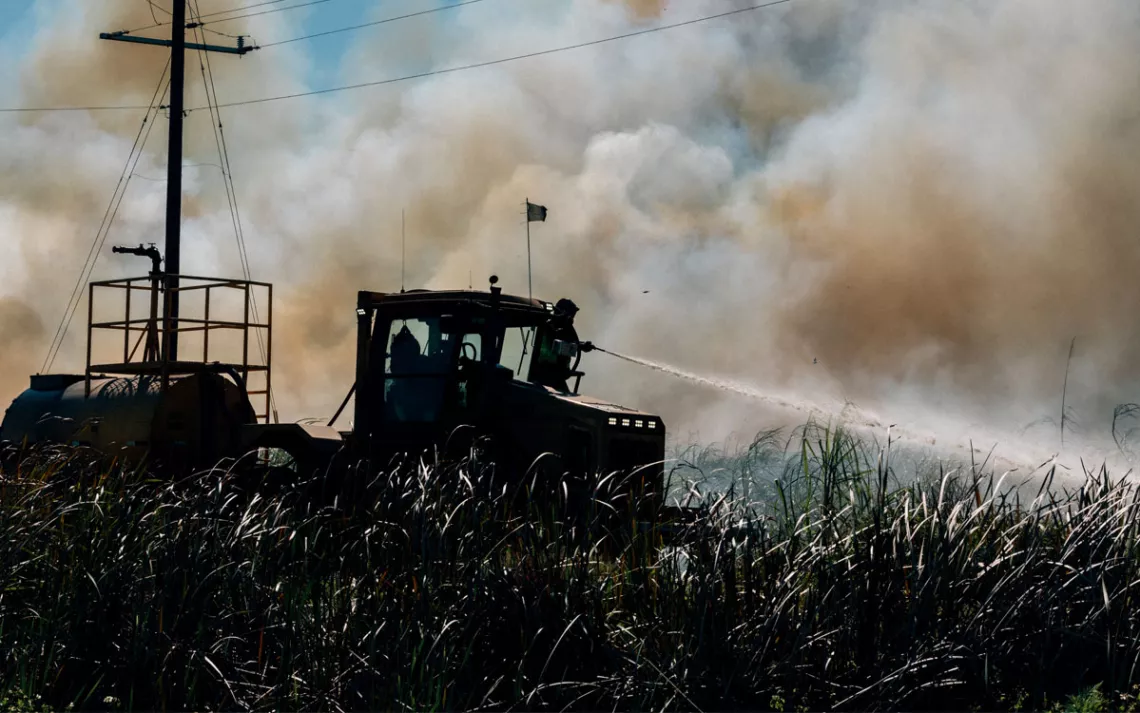
The sugarcane industry is by far the largest employer in the Glades and one of Florida’s most politically influential, investing millions in every state and federal election cycle. Industry supporters in the community tie the preservation of burning to the preservation of jobs in the Glades.
Growers maintain that the fires do not violate state or federal air-pollution laws. They blame mounting public pressure to halt burning on outsider “anti-farming activists” who seek to eradicate agriculture south of Lake Okeechobee and let the lake’s waters flow again to the Everglades. Today, those waters are heavily polluted and diverted east and west to the coasts, where their toxins harm aquatic life and human livelihoods.
The fires and the dirty discharges demonstrate that what’s legal is not always just. Farmers stress that they raise their families in the Glades too, and they would not put their communities at risk. That view misses the complexities of public health: how ethnicity and income create greater vulnerability to illness in a place like Pahokee, a primarily African American town where a third of families live in poverty.
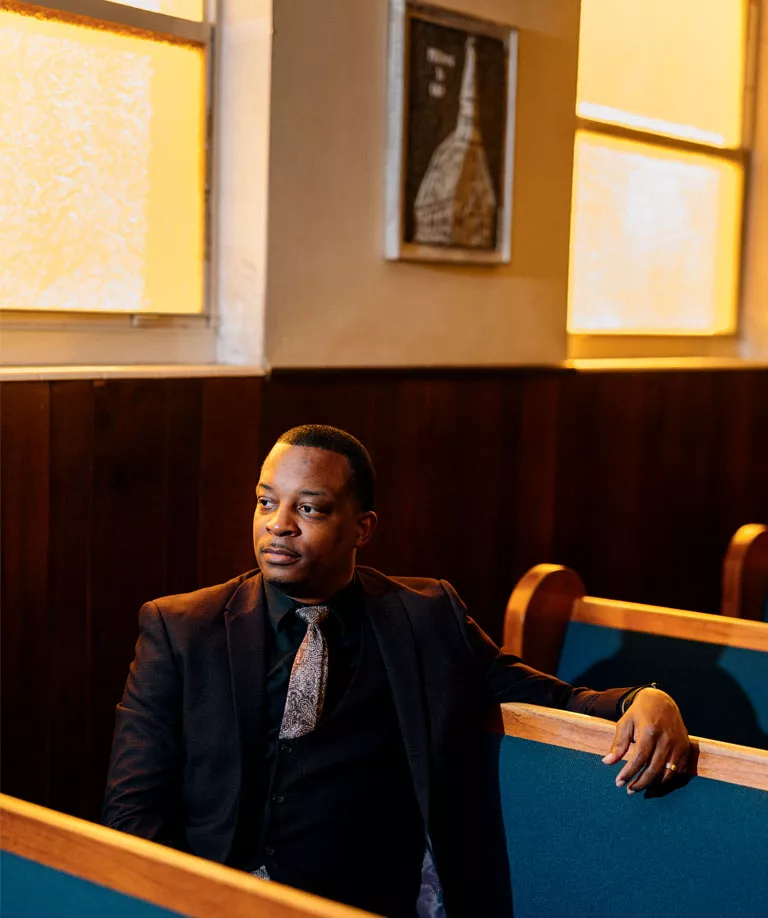
Reverend Steve Messam is senior pastor at the First Church of God South Bay. He advocates for Florida cane burning to be replaced with green harvesting. Messam said that sustainable agriculture could help struggling Glades communities become “the Silicon Valley of green energy and green products.” Consumers can do their part by buying certified-organic sugar, which is not produced by burning.
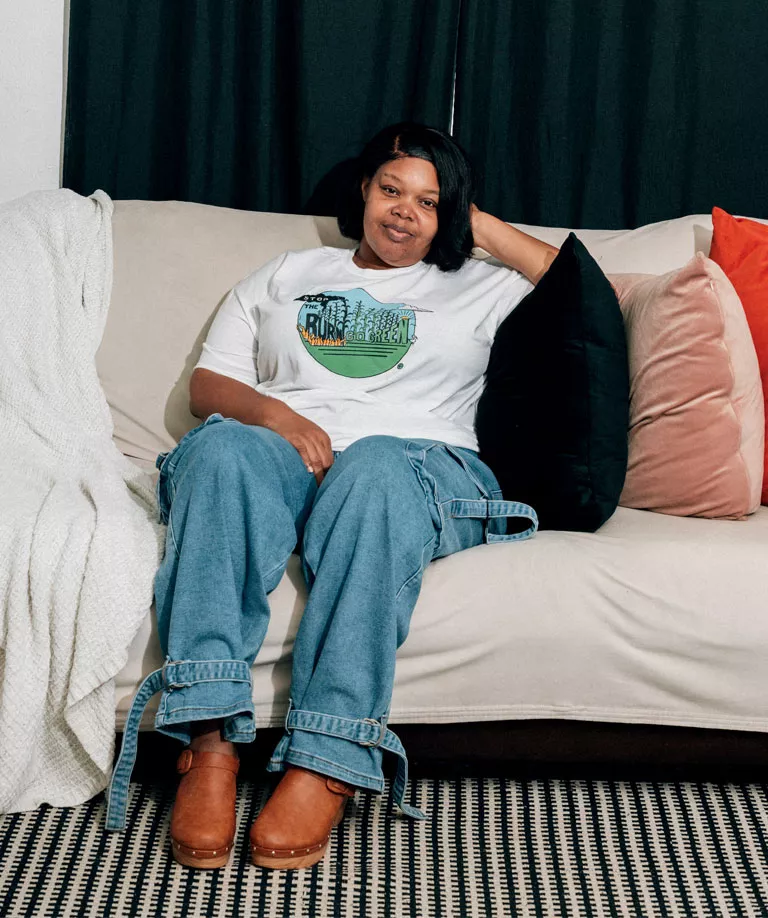
Nine years ago, South Bay community activist Kina Phillips, a fourth-generation native of the Glades, was among a group of community leaders who reached out to the Sierra Club and helped launch Florida’s Stop the Burn Campaign. Her grandson’s respiratory illness had spurred her to get involved. Because of her leadership in the campaign, Phillips said, “I’m blackballed in the community. But I’m all right with it. Those are the things that come along with standing up against injustice.”
The larger truth in Florida is that the very idea of environmental justice is incompatible with a political philosophy, now codified by law, that denies the existence of systemic injustices.
Cane burning last dominated the headlines half a century ago. In 1970, The Palm Beach Post wrote that “winds of change . . . may bring an end to sugarcane harvest with a torch.” U.S. Sugar, one of the nation’s largest sugarcane producers, touted its promising experiments with “green harvesting,” the term for cutting cane without fire.
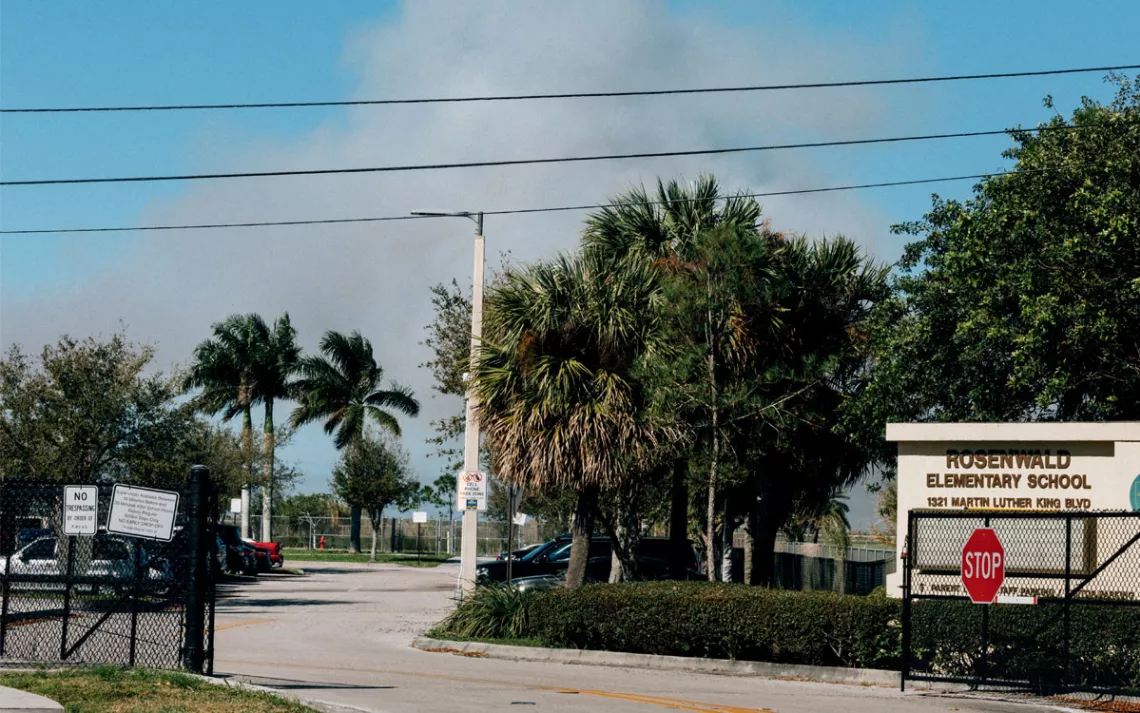
In 2008, smoke from a cane fire near Rosenwald Elementary School in South Bay sent six students to the hospital. In 2020, an investigation by Grist found that the Palm Beach County School District continued to lease land near the school for sugarcane crops. Pictured here: smoke from a cane fire on a school day last February.
But once the Florida Forest Service cracked down on cane smoke and ash drifting toward coastal Palm Beach County, the urban complaints died down—and so did the winds of change.
In the years since, other major sugarcane producers like Brazil and Australia have converted a majority of their crop to green harvesting in response to public health concerns. Florida cane growers have expanded the acreage they harvest without burning, but they argue that the green technique lowers future crop yields. Industry officials declined to talk to Sierra about the future of green harvesting, calling the very inquiry biased.
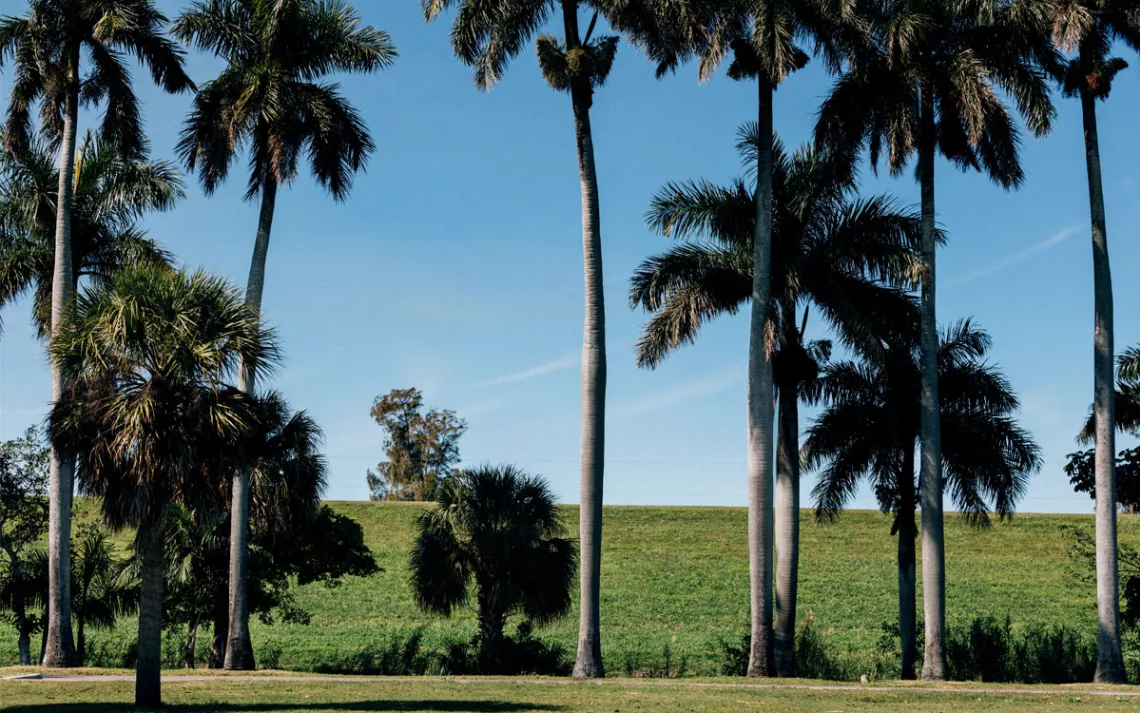
The small Glades communities on the edge of Lake Okeechobee have no view of the second-largest lake in the United States owing to a grassy, 35-foot-tall dike. Not long after the region was drained for agriculture, the Okeechobee Hurricane of 1928 sent a wall of water into Pahokee, Belle Glade, South Bay, and nearby towns. At least 2,500 people are believed to have drowned during the storm, most of them Black farmworkers.
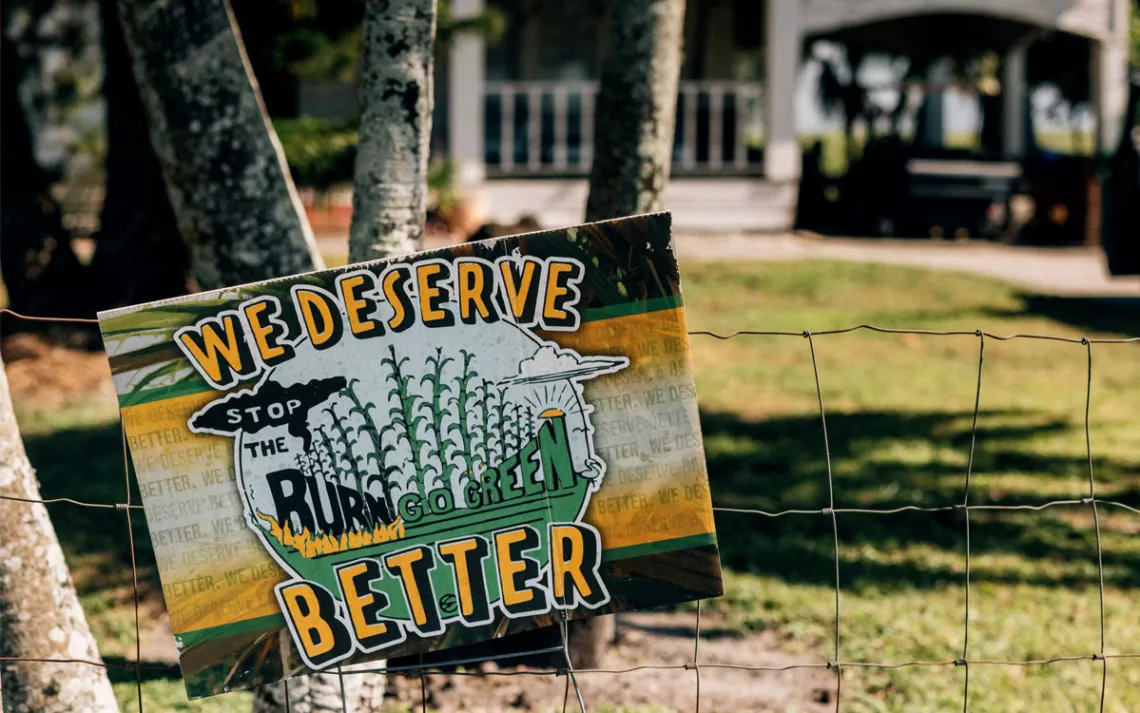
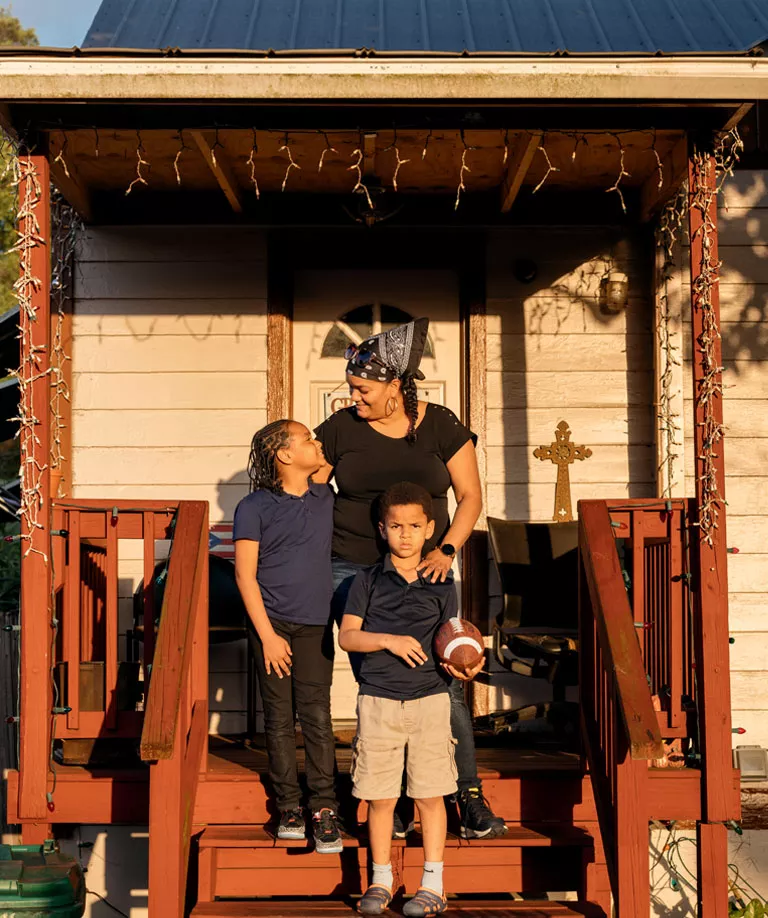
Pahokee resident Luz Torres (mom of Kamilla, 10, and Emmanuel, 7) joined the Sierra Club’s Stop the Burn Campaign to eliminate the smoke and sticky ash that her family has to deal with. Torres said her activism, including distributing yard signs, has brought pressure from friends and neighbors who fear losing jobs associated with sugarcane, an $800 million industry. “They feel like, ‘Hey, it’s burning ash, and that’s what we have to deal with,’” Torres said. “I just want to say, ‘It can be better.’”
Now, rising concern over racial and economic inequities and the climate crisis may be the spark for change. Jones is convinced that stopping the fires would help relieve her mom’s worsening respiratory illness—and benefit public health in the Glades as a whole.
She breathes easier being away at college. When she left Pahokee for the University of Florida in Gainesville, she boxed up her asthma medicine and her green frog nebulizer. She has never needed to unpack them.
 The Magazine of The Sierra Club
The Magazine of The Sierra Club
